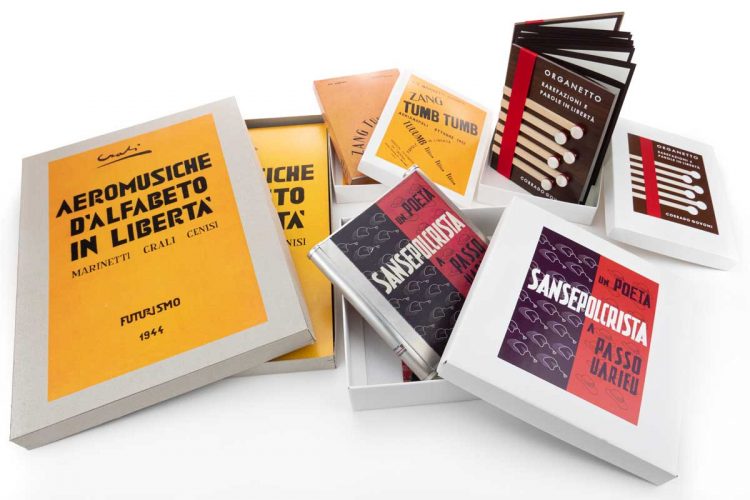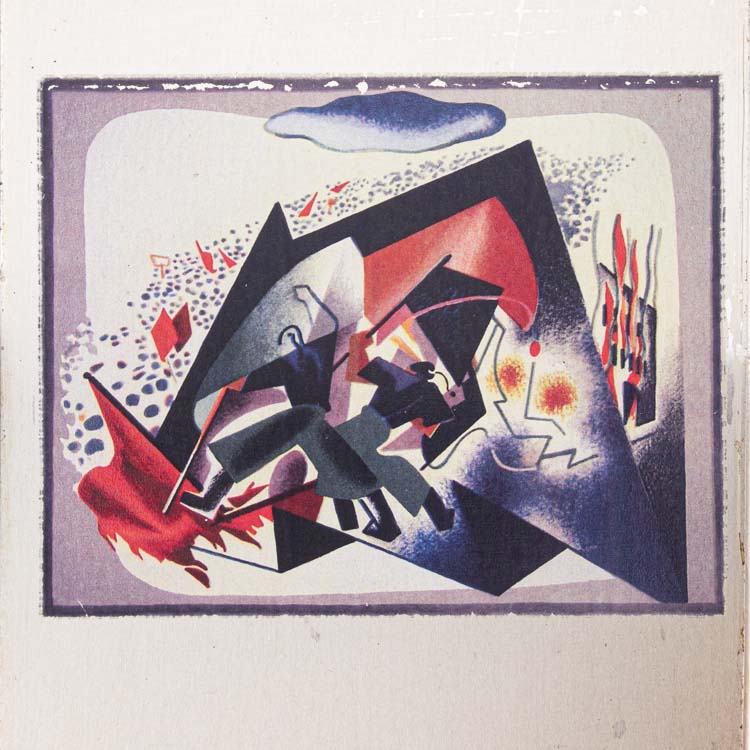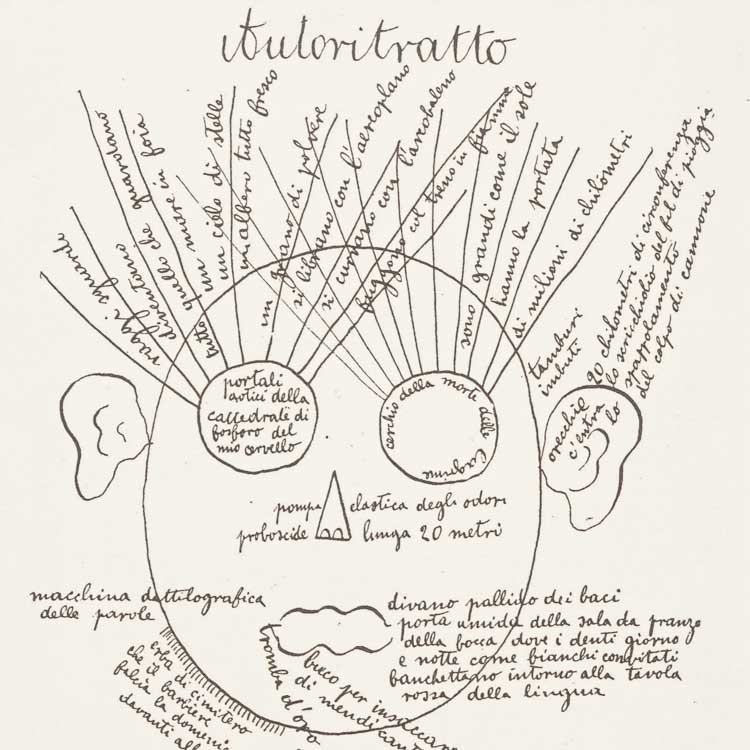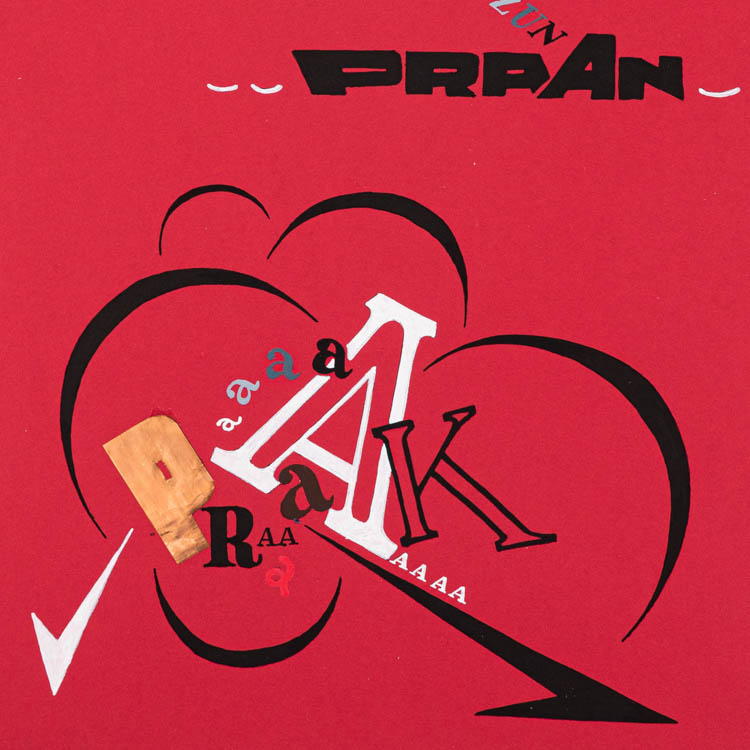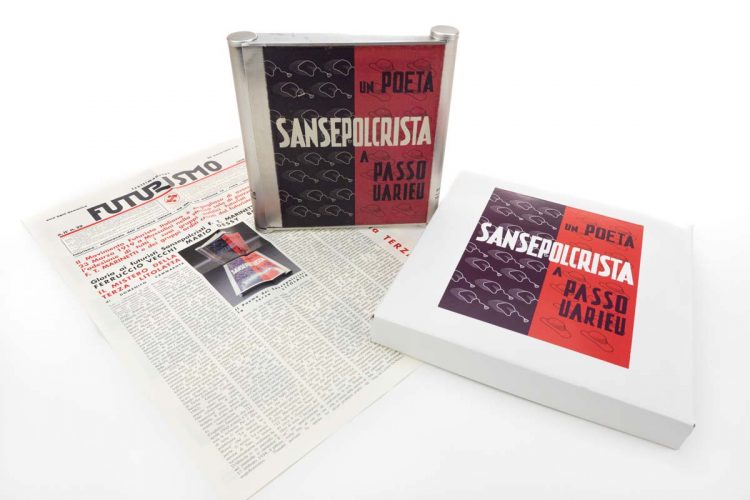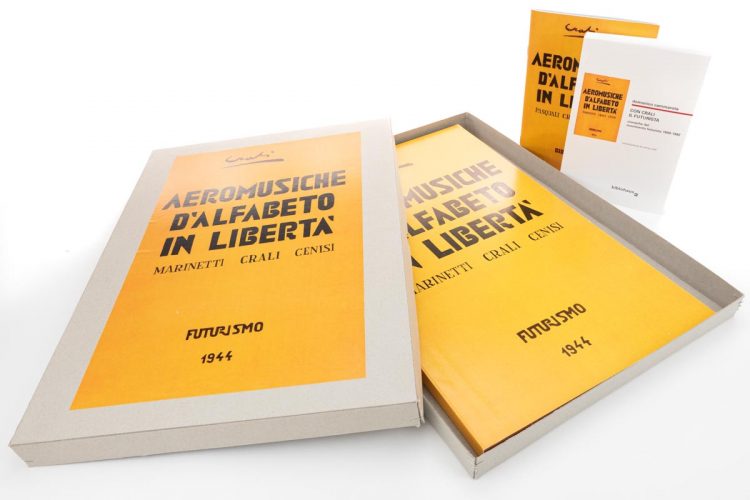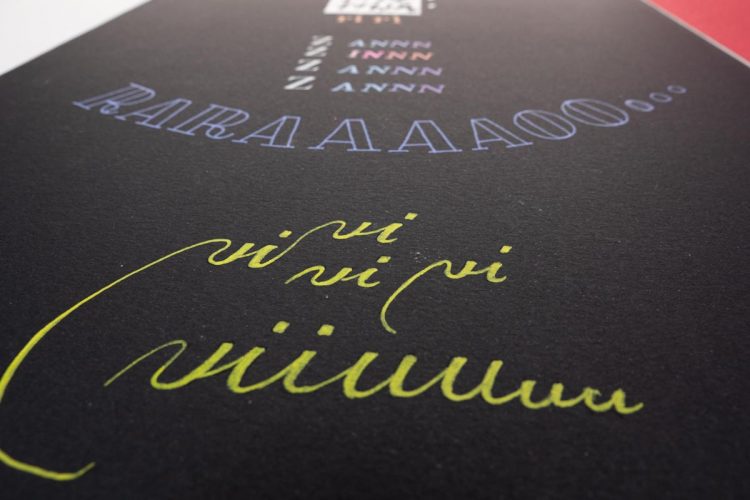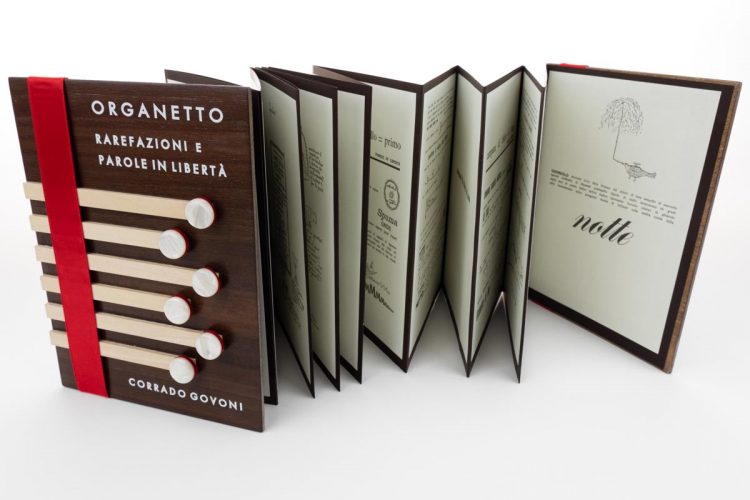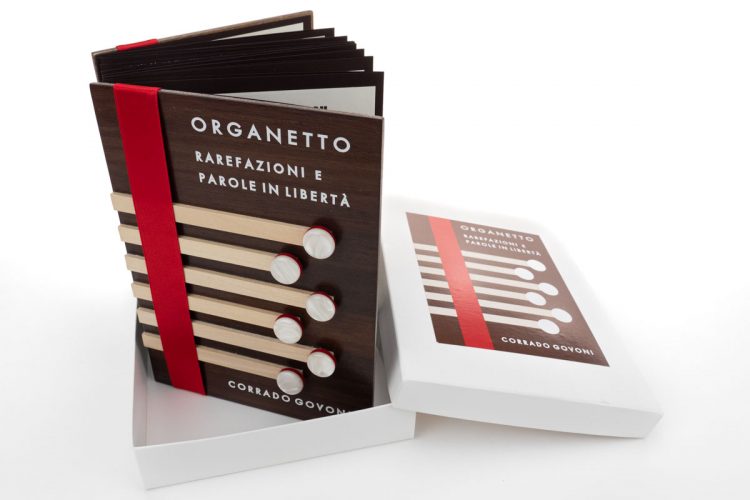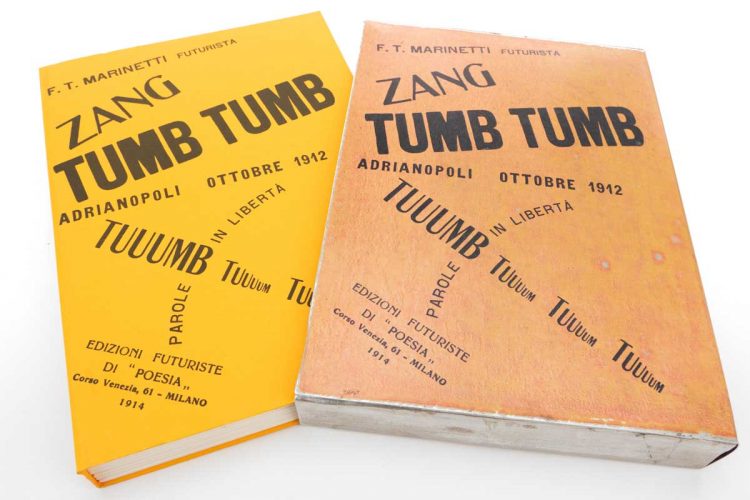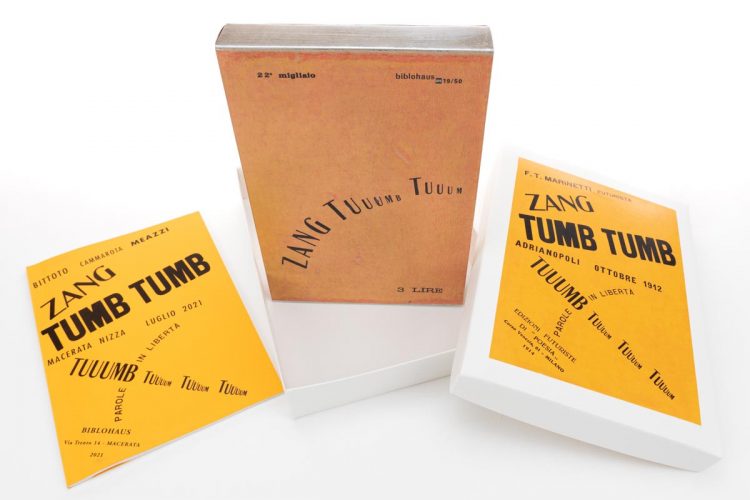Futurism was an artistic movement centered in Italy that emphasized the dynamism, speed, energy, and power of the machine, and the vitality, change, and restlessness of modern life.
Although Facsimile Finder does not typically highlight facsimiles of modern works, we are excited to present you with these stunning facsimiles of books and artworks documenting art and poetry from the Futurism movement, an early twentieth century Italian art movement that aimed to capture the modern world’s dynamism and energy through art.
We find that promoting these is a small pleasurable detour from what we typically offer!
WHAT IS FUTURISM?
- Futurism was first announced on February 20, 1909, when the Paris newspaper Le Figaro published a manifesto by the Italian poet and editor Filippo Tommaso Marinetti.
- It was an artistic movement centered in Italy that emphasized the dynamism, speed, energy, and power of the machine, and the vitality, change, and restlessness of modern life.
- Marinetti coined the word Futurism to reflect his goal of discarding inherited artistic traditions and celebrating innovation in culture and society.
Futurist painters wanted to depict visually the perception of movement, speed, and change. They adopted Cubist techniques and rhythmic spatial repetitions of an object’s outlines while moving.
During the second decade of the 20th century, the movement’s influence radiated outward across most of Europe, most significantly to the Russian avant-garde. The most-significant results of the movement were in the visual arts and poetry.
THE POEM OF SANSEPOLCRISTI
by Filippo Tommaso Marinetti with illustrations by Thayaht and Enrico Prampolini.
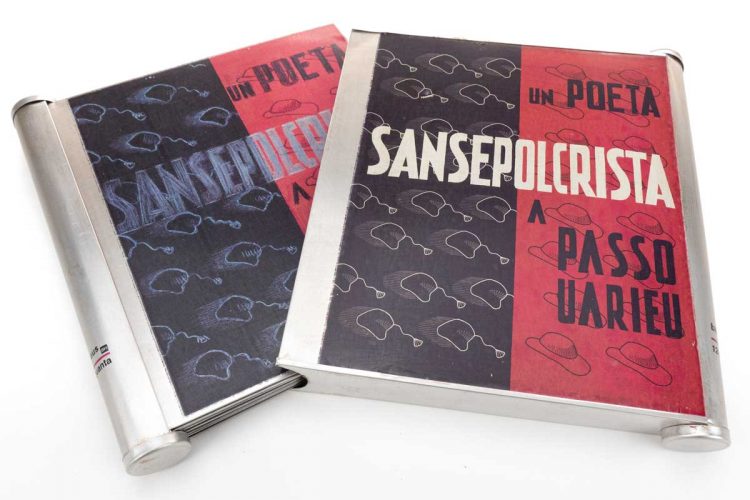
This set contains a free metal interpretation of the third Litolatta poem by Domenico Cammarota and Simone Pasquali, meantcelebrate the assembly of San Sepolcro in Milan on March 23, 1919, where the Italian “Fasci di combattimento” political party was founded under the direction of Benito Mussolini.
Excerpt from Domenico Cammarota’s text:
“All collectors of rare bibliographic finds from the 1900s know – at least by reputation – the two famous Futurist litolatte: the Words in Freedom Olfactory Tactile-Thermal by FT Marinetti (November 4, 1932), illustrated by Tullio D’Albisola, and L’Anguria lirica (long passionate poem) by Tullio D’Albisola himself (August 1934), illustrated by Bruno Munari.
Only a few specialists on the subject, however, remember that at the time a third work was also planned and put in place poetics in litholact, destined to be printed again by the tinsmith industry of Vincenzo Nosenzo in Zinola; the title of this work in progress was I Sansepolcristi, a synthetic and free word aeropoem by Marinetti, dedicated to the lyrical exaltation of the sadly famous Gathering of Piazza San Sepolcro (1919), founding of the origins of fascism, in which numerous daring and futurists from all regions of Italy participated.
Interlinked letters between the protagonists of this forgotten project (collected by Danilo Presotto in the Notebook of Tullio D’Albisola vol. 3, Savona, Editrice Liguria, 1981), today we can follow step by step the compositional process of this “mysterious” third work in litholact”.
ALPHABET AEROMUSICS IN FREEDOM
By Tullio Crali
Provocative, grandiloquent, disruptive, written, and oral, “parole in libertà” (“words-in-freedom“) was a poetic art form created by Futurism’s founder, Filippo Tommaso Marinetti. He combined poetic elements with features characteristic of prose narratives and freely deployed sound, especially onomatopoeia (that is, words that sound in some way similar to the objects or events to which they refer), along with the unconventional use of fonts and characters and other typographic effects. Employing extremely simplified syntax, Marinetti shifts from one idea or image to another, and uses unorthodox and sparse punctuation.
Excerpt from Domenico Cammarota’s text:
“Aeromusiche d’Alfabeto in Libertà is packaged in a volume containing the parolibere tables (Tavole parolibere futuriste) painted with brush and tempera colors by Marinetti, Crali, and Raoul Cenisi. The only copy is donated to Marinetti, who unfortunately will not be able to get it published in time from Edizioni ERRE. […]
Between the end of 1984 and the beginning of 1985, the bitter discovery that Crali made when he realized that the copy given to Marinetti was strangely finished in the hands of a well-known Roman antiquarian bookseller, who immediately hastened to resell it to the American collector Mitchell Wolfson Jr .. […] So it was that Crali decided to pack two more virtually identical copies, one for his personal archive, and another then given to the third artist involved in the project, the painter from Gorizia Raoul Cenisi. […] This book-object was then exhibited for the first time as part of the Veneto Futurism exhibition, held in Padua in 1990; and a couple of photos of the panels of the large book in this tione, plus an image of the same specimen exhibited standing enclosed in a glass case, also embellished the exhibition catalog. […] To create this spectacular volume, Crali’s personal specimen was obviously taken into consideration, jealously guarded by the family and generously granted for reproduction.”
ORGANETTO – RAREFACTIONS AND WORDS IN FREEDOM
By Corrado Govoni
In Rarefazioni (Rarefactions) Govoni, although linked to Futurism, differs in the unique manner of the stroke and sign. If that of Marinetti and the Futurists is a snappy, aggressive and dynamic style, Govoni’s is instead a childish drawing accompanied by an equally childish writing, which are part of his crepuscular formation. The term “rarefazioni”, which appears in the title of the collection, is an indicative sign of a poetic style that is still focused on the static nature of suspended and somewhat evanescent atmospheres. This is a visual poem, which means that it consists of drawings and captions associated with each drawing.
Excerpt from Domenico Cammarota’s text:
“And here we come to the editorial genesis of this new futurist find presented by the Biblohaus, after the previous spectacular proposals of the third Litolatta by F. T. Marinetti, and of the Librone parolibero by Tullio Crali: the reprint in numbered edition of 50 copies, authorized by the heirs of the Govoni family, of Corrado Govoni’s Rarefazioni e Parole in liberty, for the first time published according to the original will of the author , that is in the form known as “Organetto” described in detail by Govoni to his friend Marinetti, in the letter of 11 January 1915 cited above.
In the 15 x 21 cm format, closer to the size of a real accordion, the complete text of the Rarefazioni has been reprinted, obviously with the exclusion of the self-promotional pages where Marinetti inserted the changing organization chart of the Futurist Movement and the updated list of books published by the Futurist Editions of “Poetry”, and this always to respect the precise wishes of Govonian, already expressed in other letters to Marinetti, about not wanting to be cited or grouped in generalized lists whose aims he did not understand, and did not appreciate the forced community.”
ZANG TUMB TUMB (ZANG TUMB TUUUM) – Adrianople, October, 1912
by Filippo Tommaso Marinetti
One of the most famous examples of words-in-freedom, Zang Tumb Tumb is Marinetti’s dynamic expression of the siege of the Turkish city of Adrianople (now Edirne) during the Balkan War of 1912, which he reported on as a war correspondent. The title of the book elicits the sights and sounds of mechanized war—artillery shelling, bombs, and explosions.
Excerpt from the publisher’s description:
“Zang Tumb Tuuum, the book by F. T. Marinetti is the first volume of words in freedom ever, and the forerunner of all the immense word-free, concrete, visual and experimental production of the avant-gardes around the world, but it is also the first example – conceptual and practical – of “book of artist” of the twentieth century, conceived for a diffusion no longer elitist (as happened in the symbolist books), but much more enlarged, influential, and militant.
Zang Tumb Tuuum is therefore an icon book, the first “object volume” not so much for its external appearance, very classic and very different from the subsequent litholatte or the Déperian bolted, but for the internal typographic dress studied together with Cavanna, a craftsman bold printer like the author if not more.
The anastatic reproduction of Zang Tumb Tuuum, masterfully created by Simone Pasquali (worthy heir of the typographer Cesare Cavanna), was made possible by a happy concomitance of intentions, energies and above all funding supported by the Université Côte d’Azur and obtained through the Graduate School “CREATES – Arts et Humanités” to which I belong, as part of a research project entitled RAG – Relire les Avant-gardes (re-reading the avant-gardes). The expression of my gratitude goes to Giacomo Coronelli of the Pontremoli Library in Milan and to Enrico Bittoto, a generous collector, for having made a copy of Zang Tumb Tuuum available for digitization: without their help, this precious anastatic reproduction would not exist. So thanks to them, and heartfelt thanks to Domenico Cammarota for having agreed to write, together with Enrico Bittoto and me, the introductory note.”
LES MOTS EN LIBERTÉ FUTURISTES
by Filippo Tommaso Marinetti
This veritable Marinettian “Summa” is structured as an ideal Futurist school-book and it comprises two parts: ‘Les mots en liberté’ and ‘Exemples de mots en liberté’. While the first one compiles various theoretical ideas which had come out in the previous decade, the second section contains Marinetti’s more creative exploits, including some of his unpublished work.
Excerpt from Domenico Cammarota’s text:

“The first edition of the volume, specifically designed for widespread use and dissemination on an international level, was not printed in Italian, but only in French. It is worth noting that until 1916, Marinetti’s preferred language for creative expression had been exclusively French, and that all the Italian versions – often unsuccessful – of his books and manifestos were the work of his secretary Decio Cinti. Therefore, the choice to publish Les mots en liberté futuristes (Words in Futurists’ Freedom) in French represented, in some way, a certain guarantee of total control over the integrity of Marinetti’s thoughts on the subject.
The most important parolibere tables are the last four of the volume, not coincidentally printed on a much larger sheet, on pages that are folded multiple times.
Surprisingly, this work was never translated into Italian, even though at one point Marinetti thought he could entrust his text to the publisher Gaetano Facchi. Les mots en liberté futuristes did not appear in any other language, although pages 11-20 of the original French text were translated into English by Albert Henry Allen for an American edition which was never completed.”
FUTUR POP-UP
by Domenico Cammarota and Simone Pasquali
Dynamic and brilliant, FUTUR POP-UP is a reminder of avant-garde art’s playful dimension, which allows you to experience Futurism’s most iconic paintings, sculptures and architectures in three-dimensional perspective.
Excerpt from Domenico Cammarota’s text:
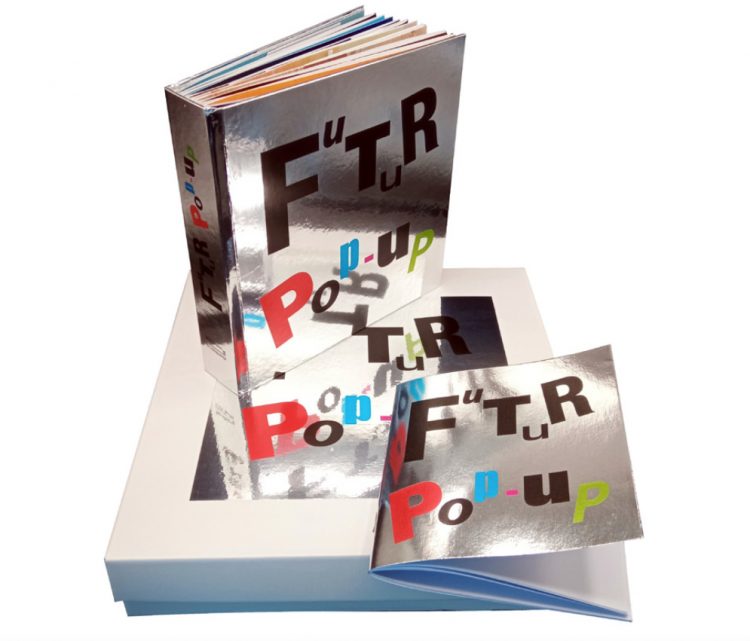
“In a colorful overview of the most stunning works by Futurism’s pivotal artists, this limited edition of only 50 numbered copies (the progressive number appears on the spine) contains handcrafted reproductions on a wide range of high-quality papers and cardboards, enclosed in a protective box. FUTUR POP-UP is now ready to be read, viewed, touched, admired and played with: an ideal multi-purpose object meant to both be displayed and consulted daily.”
BIF§ZF+18. SIMULTANEITY AND LYRICAL CHEMISMS
by Ardengo Soffici
BIF§ZF+18. Simultaneità e chimismi lirici (BIF§ZF+18. Simultaneity and Lyrical Chemisms) by Ardengo Soffici is known as one of the four most spectacular, sought-after, and expensive futurist books in the world (alongside the stapled volume Depero futurista by Dinamo-Azari, and the two Litolattes by F. T. Marinetti and Tullio D’Albisola); obviously this only refers to its first In-Folio edition.
Excerpt from Domenico Cammarota’s text:
“Scornfully renamed as Bizzeffe (Galore) by an irritable and vengeful Dino Campana, who could not forgive Soffici for losing the original manuscript of his Canti orfici (Orphic Songs), the volume was thus curiously titled by its author for technical reasons:
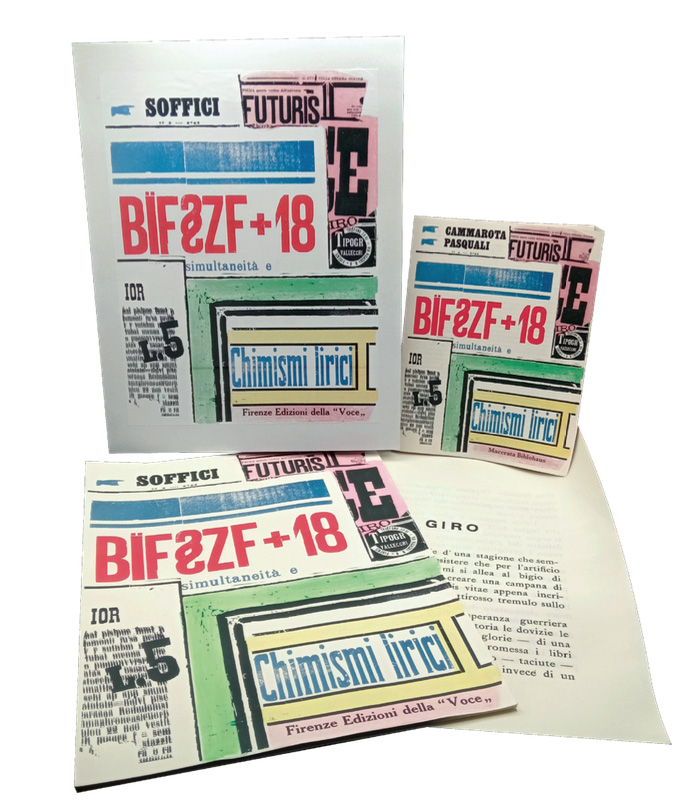
Its general title was suggested to me by one of those bizarre combinations of characters and typographic signs that sometimes result from their disordered descent from the “warehouse” of the linotype onto the lead of a line, due to a magic spell or a temporary malfunction of the machine, and whose suggestive oddity intrigued me, as it somehow corresponded to the fantastic uniqueness of the text. (Ardengo Soffici, Fine di un mondo, Florence, Vallecchi, 1955, p. 462).
The title and typographical structure of the volume therefore refer to a possible error theory seen as a “creative act,” not to be corrected, nor – obviously – to be sought as a deliberate act, but only to be accepted, trusting in the unpredictability of chance, in the futurist intuition (of Bergsonian origin). Thus, the modern Linotype machine became an integral part of the creative authorship process, with its new compositional techniques – but also with the undeniable signs of a progressive humanization (and relative decline) of its mechanical parts – evidenced in the volume by typographical smudges, as well as by the classic signs of wear on the individual printing characters.”
IN THE ALUMINUM TAVERN
by Valentina Marchionni, Simone Pasquali and Guido Andrea Pautasso
This volume includes a facsimile reprint of the Santopalato Tavern’s menu, the article ‘Dal Brodo solare al Pollo d’acciaio nella taverna futurista’ (From Solar Broth to Steel Chicken at the Futurist Tavern) printed on aluminum foil, first published for the inauguration of the Futurist restaurant, as well as a pamphlet containing some of Guido Andrea’s writings.
Excerpt from Guido Andrea Pautasso’s text:
“On March 8, 1931, the first Futurist restaurant, the Santopalato Tavern, was inaugurated in Turin. Described by Fillìa and Marinetti in La cucina futurista (The Futurist Cookbook) as
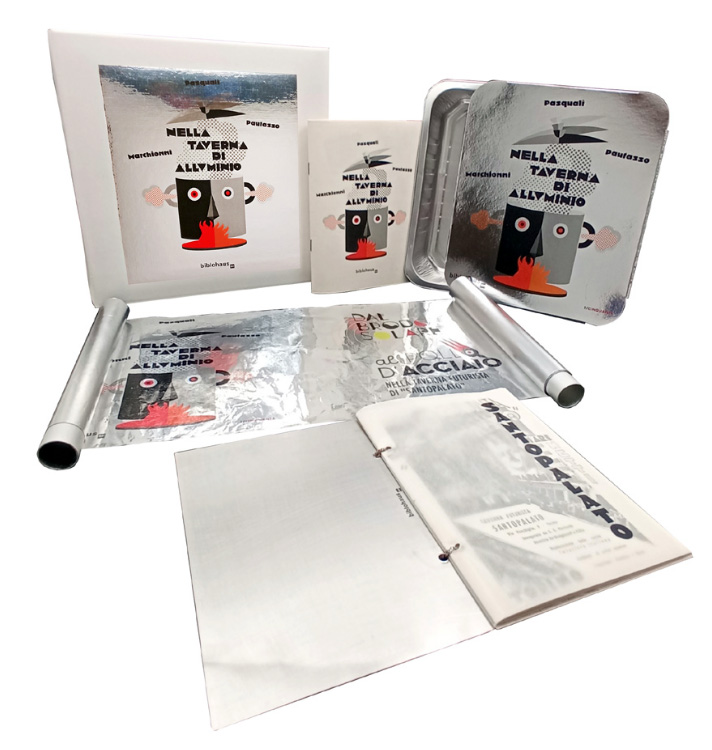
A large cubic box embedded, on one side, in a smaller one. Adorned with semicircular columns, internally lit, and large metallic eyes, also luminous, set halfway up the wall; otherwise clad in the purest aluminum, from floor to ceiling.
The Turinese restaurant was redesigned in a Futurist style by Fillìa and Nicolay Diulgheroff, who clad the walls with aluminum (an idea later adopted in the 1960s by Andy Warhol to decorate his New York Factory), and furnished the space with an anti-aesthetic minimalist décor that transformed it into a sort of submarine emerged from the waters or – more fancifully – into a spaceship landed on Earth. On the night of the inauguration, Marinetti ambitiously declared:
In the realm of culinary art, we are still behind: I invite you to the most revolutionary anarchy. This is nothing. Beyond, even further, oh gentlemen.
After this speech came the original banquet and we can still view its inaugural menu. It included two different covers, one made of aluminum like the restaurant’s walls, the other printed on cardboard with the inscription “Santopalato”. The illustrations on the plaquette comprised a photomontage by Diulgheroff and a series of advertising plates made for Amaro Cora, for Metzger Beer, and for Guinzio and Rossi Aluminum.”
VOLTAIC ARCS
by Volt
This volume is a limited facsimile edition of only 50 numbered copies – provided with a metal case.
Excerpt from the publisher’s description:
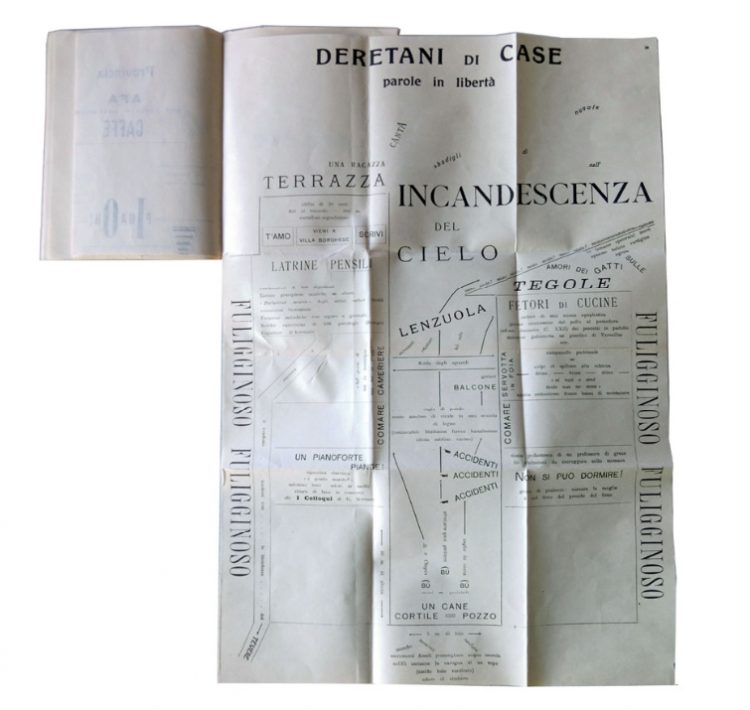
“Archi voltaici (Voltaic Arcs) is an extremely rare book. Indeed, the ICCU circuit (the Central Institute for the Union Catalogue of Italian Libraries and Bibliographic Information) has access to only two copies. To these, we have to add another three copies found in prestigious museum collections in the USA, as well as about five copies in private collections; one additional surviving copy was recently put up for sale by the antiquarian experts of Libreria Pontremoli at the remarkable sum of 3000 euros.”
OCCUPIED CITY – The First Italian Edition of Paul Van Ostaijen’s ‘Bezette Stad’
by Paul Van Ostaijen (translated by Alessandro Zanini)
La città occupata (Occupied City) is an unprecedented work among early twentieth century European poetry, as it comprises fragments and snippets of popular songs, advertisements, signs, cinematic images, and newspaper headlines.
Excerpt from the publisher’s description:
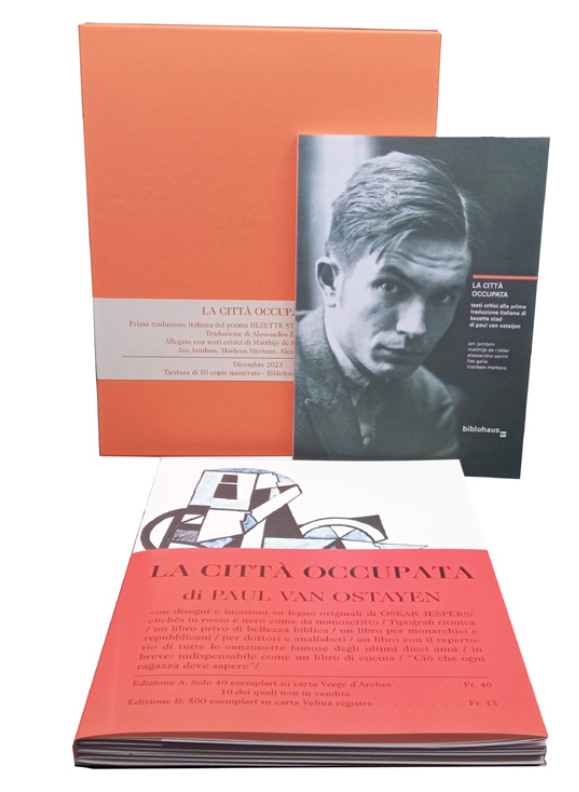
“Dutch, French, German, English, and Italian all appear within this collection, as they represent the languages of the countries that have contributed most to Western European Avant-Gardes. Van Ostaijen creates a highly personal fusion of poetry, visual arts, and early cinema. He offers an original synthesis, with results that cannot be assimilated either to Calligrammes (1918) by Guillaume Apollinaire or to the dynamic Futurist poetry of Filippo Tommaso Marinetti, although the Italian readers will easily recognize Futurist themes in the collection of the Flemish poet and find similarities and/or differences with Zang Tumb Tuuum (1914). In about one hundred and fifty pages, Occupied City summarizes the historical narrative of the war in Antwerp, as well as many other European cities, addressing the questions that would inflame the whole century from various perspectives, both personal and collective, local and international.”
THE FUTURIST COOKBOOK
by Filippo Tommaso Marinetti and Fillìa
This volume gathers the essential principles of the renewal of Italian gastronomy, introduced by Filippo Tommaso Marinetti in the 1930s in the name of Futurism and Avant-Garde art in the kitchen.
Excerpt from Guido Andrea Pautasso’s text:
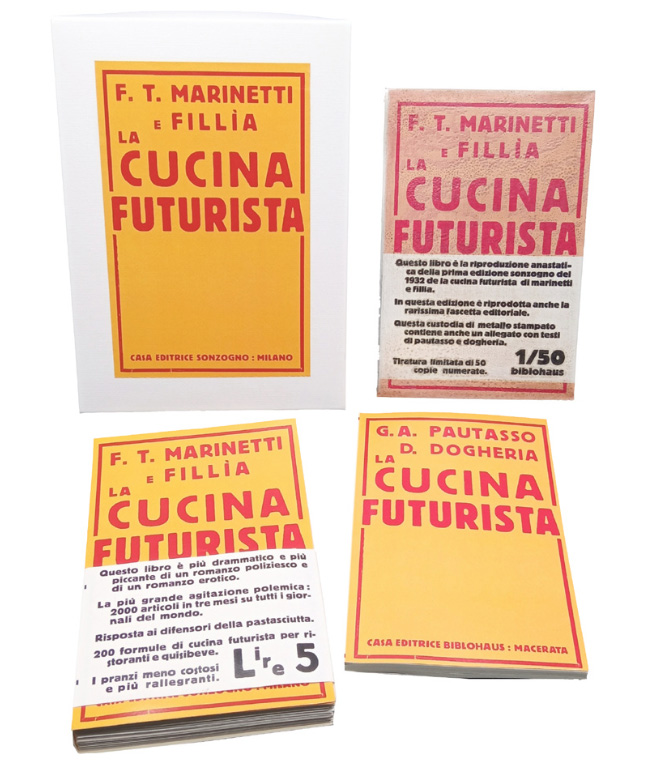
“La cucina futurista (The Futurist Cookbook) was written by Marinetti in collaboration with the second-in-command of the Futurist movement, Fillìa (nom de plume of Luigi Onorato Ermanno Colombo), and although more than ninety years have passed since its publication, it remains unclear which of the two Futurists first came up with the idea to publish it in order to spread the guiding principles of “gastrosophy” and Futurist cuisine. The charm of The Futurist Cookbook lies in its total and absolute originality: it cannot simply be categorized as a cookbook; it not only contains recipes but also fundamental theoretical elements necessary to understand this unique gastronomic experience. The volume collects Marinetti’s latest version of the Manifesto della cucina futurista (Manifesto of Futurist Cuisine) (not the one written in 1913 by the French chef Jules Maincave, which Marinetti later reworked and presented in 1927 in the pages of “La Fiera Letteraria”). As an introduction, it features an intriguing mystery tale titled ‘Un pranzo che evitò un suicidio’ (A Lunch That Avoided a Suicide), starring Marinetti and Enrico Prampolini. The volume also includes the controversies that arose after the declaration of war on pasta and a systematization of the Futurist gastronomic dogmas organized by chapters.”
To inquire about purchasing any of the books highlighted above, email me at giovanni@facsimilefinder.com with questions and/or for a full quote.


